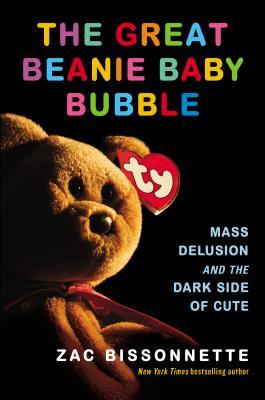Recently 1990s culture has become something of a niche market. I was somewhat taken aback to see things like “90s Night” cropping up at clubs, where I imagine mostly Millennials dance the night away to Better than Ezra or the Spice Girls. I remembered my wife’s parents being solidly shocked and somewhat disgusted when the fashions of the 1970s made it into shops in the 90s. Flared bell bottoms and poets blouses were all over the place and they couldn’t believe it. At the time I thought it was funny. Now, however, I see why they were cringing. Having lived through any moment of culture the first time, us old-heads have the desire to say “Hey, we didn’t know any better! You’ve had the chance to see better stuff!”
This brings me to a very special, weird, and frankly, kind of amazing part of American culture from that period.

I stumbled on Zac Bissonnette’s book The Great Beanie Baby Bubble shortly after it was published and I was blown away by it for a few reasons. I wasn’t a Beanie Baby collector in the 90s and I never really understood the whole thing, but I remember one particular instance that really crystallized the whole Beanie Mania thing for me.
In probably 1997 or 1998 (which Bissonnette points out, was the height of the Beanie craze) I was working night shift at a grocery store. One morning after my shift ended I went to the card store to get my Mom a birthday card. I was early (the store didn’t open until 9, but I got there around 8:40) and I was really surprised to see that there was a line to get into the place! At first I had no idea what was going on, but when they opened the doors I quickly realized what was happening – a new Beanie Baby was being released that day and these people wanted to be the first to get it. This surprised me to no end. Another thing that took me off guard was how business-like and joy-less everybody there was. It was then that I realized that collecting these things wasn’t a hobby for many people, but rather an attempt to invest in something and make some money.
Bissonnette’s book is tellingly subtitled “Mass Delusion and the Dark Side of Cute.” It traces the development of the company, and the founder Ty Warner, as well as getting into how and why this kind of a mass craze can occur. From the first few Beanie fanatics who actually made a great deal of money from selling “rare” beanies (like Humphrey the Camel, Patty the Platypus, and Old Face Teddy), to the development of publications devoted to the hobby and practice, to an interview with the now incarcerated so-called Beanie Baby Murderer, Bissonnette does an amazing job. This book is remarkably well written.
I will include one spoiler: before you search around your house for those old Beanie Babies in order to make a million, they aren’t worth anything now!
Eric works at the Library for the Blind and Physically Handicapped and is a regular contributor to their blog.
